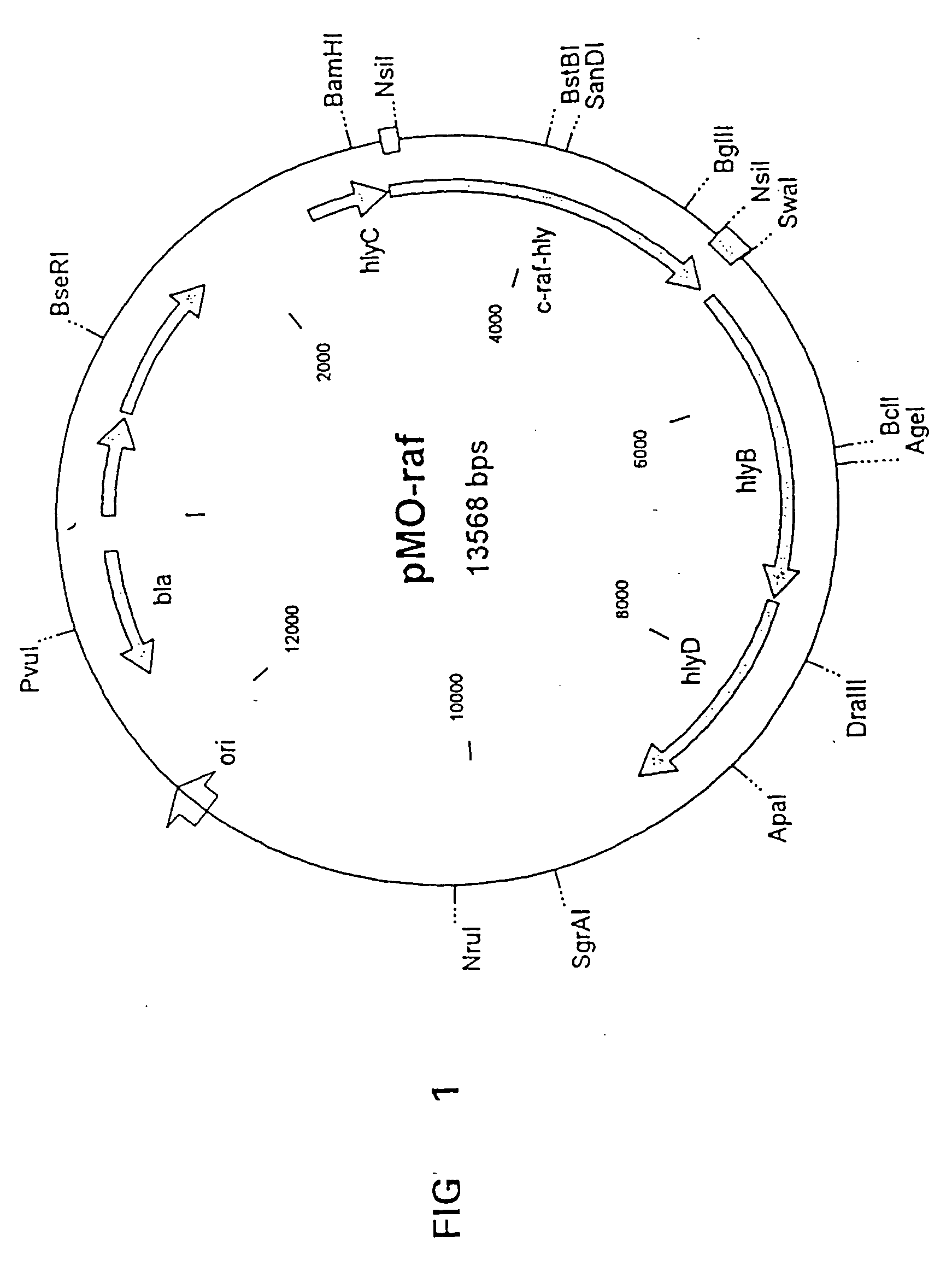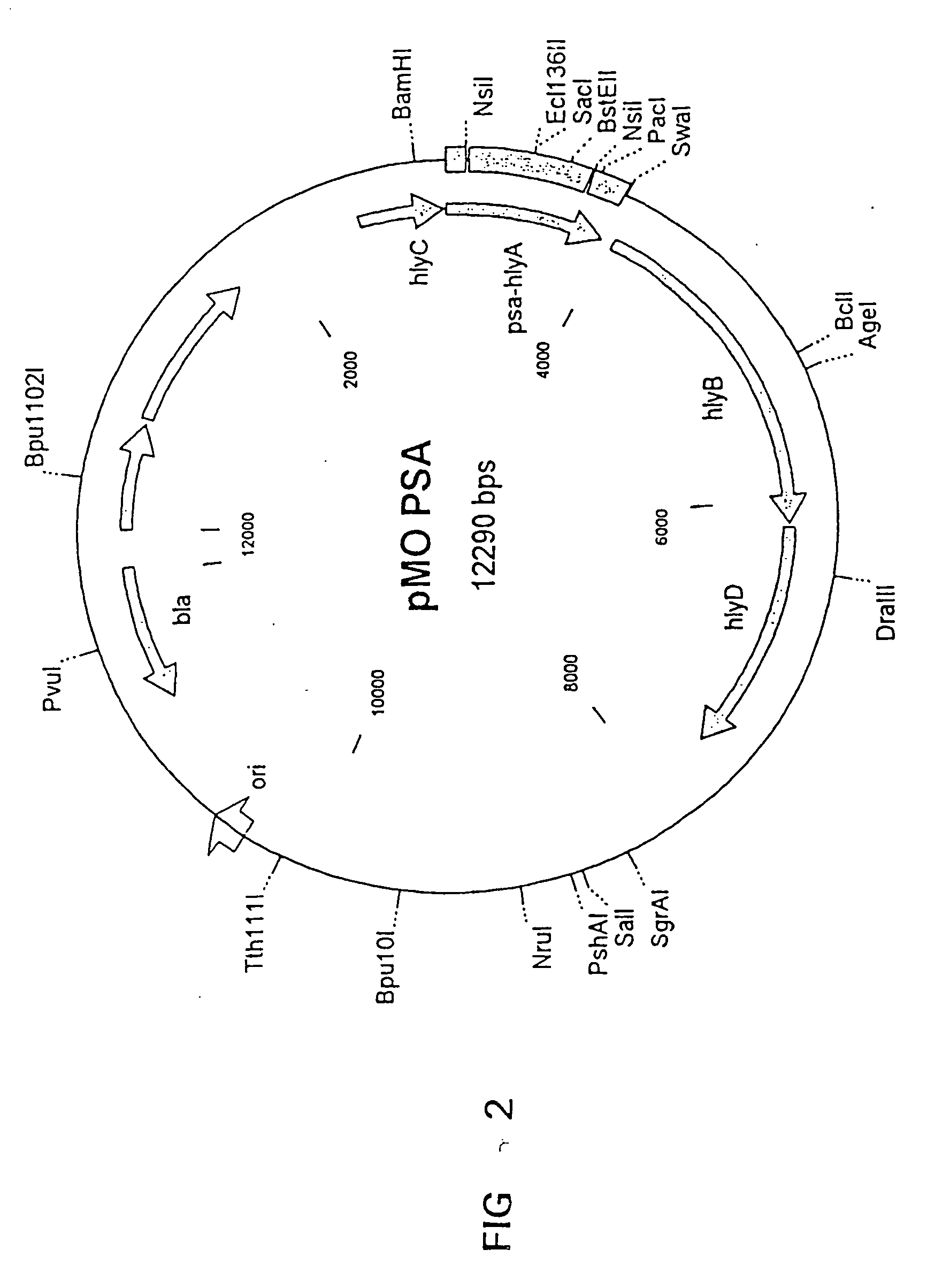Microorganisms as carriers of nucleotide sequences coding for cell antigens used for the treatment of tumors
- Summary
- Abstract
- Description
- Claims
- Application Information
AI Technical Summary
Benefits of technology
Problems solved by technology
Method used
Image
Examples
example 1
Induction of an Immune Response in BxB Mice by Immunization with Salmonellae Expressing c-raf
[0042] Raf is a normally cytosolic serine / threonine kinase (PSK), which in conjunction with other proteins of signal cascades controls the cell growth and survival (Kerkhoff and Rapp, Oncogene 17:1457-1462, 1998; Troppmair and Rapp, Recent Results Cancer Res. 143:245-249, 1997). A binding of a growth factor to a respective receptor normally leads via an activation of Ras, the subsequent activation of Raf via several phosphorylation steps via the PSK and tyrosine kinase MEK and the PSK ERK to an activation of the replication machinery in the cell nucleus (Kerkhoff and Rapp, Oncogene 17:1457-1462, 1998). The first link in this chain, the small G protein Ras, is present in a modified form in 30% of all human tumors (Zachos and Spandidos, Crit. Rev. Oncol. Hematol. 26:65-75, 1997). Raf is an effector of Ras and is present in an over-expressed form in a multitude of human tumors (Naumann et al.,...
example 2
Induction of an Immune Response in BALB / C Mice by Immunization with Salmonellae Expressing PSA
[0051] The existence of tissue-specific antigens, in particular of those, which are synthesized and expressed to a high degree by tumor cells, is, beside the diagnostic usability of these markers, also a possible starting point for therapeutic approaches. For the prostate carcinoma, up to now three antigens worth mentioning have been identified: PSA (prostate-specific antigen), PSMA (prostate-specific membrane antigen) and PSCA (prostate stem cell antigen). Whilst PSA exists already in early tumor forms in an over-expressed manner (Watt et al., Proc. Natl. Acad. Sci. USA 83:3166-3170, 1986; Wang et al., Prostate 2:89-96, 1981) and thus contributes for carcinoma diagnosis (Labrie et al., J. Urol. 147:846-851; discussion 851-842, 1992), the PSCA expression is in most cases only increased in the locally advanced, dedifferentiated and metastasized tumor stage (Gu et al., Oncogene 19:1288-1296,...
PUM
 Login to View More
Login to View More Abstract
Description
Claims
Application Information
 Login to View More
Login to View More - R&D
- Intellectual Property
- Life Sciences
- Materials
- Tech Scout
- Unparalleled Data Quality
- Higher Quality Content
- 60% Fewer Hallucinations
Browse by: Latest US Patents, China's latest patents, Technical Efficacy Thesaurus, Application Domain, Technology Topic, Popular Technical Reports.
© 2025 PatSnap. All rights reserved.Legal|Privacy policy|Modern Slavery Act Transparency Statement|Sitemap|About US| Contact US: help@patsnap.com


